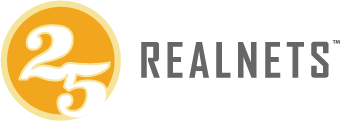Marketing is a challenging field full of twists, turns and terms. That’s why our team is here to help guide you through the processes and strategies of what it takes to effectively market your business, as well as provide you with an interpretation and understanding of how we reach our most successful results. But, before we get ahead of ourselves, in order to better know how marketing works, you must start with a basic understanding of the lingo.
We’ve found that one of the more challenging aspects of understanding marketing is that of SEO (search engine optimization). SEO runs by its own set of terms and language that can be difficult to follow if you’re new to this concept. So, let’s take a look at some of those most basic SEO terms that you need to know:
1. Title Tag
A title tag, as you may have guessed, represents a page’s title. It is the title that you see displayed on the tabs in your browser or in the headlines of search results. These tags function as identifiers so that both search engines and users are able to see what your web page is about. Because of this, you want these tags to be unique and relevant to what you display on each page.
2. Keyword
This term is one that you will hear used a lot in SEO. Keywords are a set of words that represent the content within your website. These relevant words or phrases found in title tags, headlines and throughout your content exemplify your brand, products or services. They are an essential element of SEO because they help users and search engines identify the content found on your site.
3. Anchor Text
This is the term for hyperlinked text. In SEO speak, they call it this because it is the anchor to a given link. Keyword-rich anchor text can help enhance search rankings.
4. Meta Description
The meta description is simply another .html tag. Its purpose is specifically to describe the page, so you want it to be a unique and relevant description of your page. In fact, with each meta description, you want to be sure to include your call-to-action. Though these descriptions don’t actually have an effect on rankings, they do increase click-through rates, as they show up in search results.
5. SERP
The Search Engine Results Page, or SERP, is the return you get from typing in a search query (i.e. your results page).
6. Links
In SEO, there are two types of links that you will hear about – internal and external. Internal links occur between pages within your website. For example, all of the links that are found in your page’s navigation bar are internal links redirecting you to another location within your website. External, on the other hand, are links that are either coming to or going from your website. In other words, someone posts a link directing them to your website and vice versa.
7. Indexing
Indexing is the search engine’s storage process. When search engines find new web pages on the Internet, they index them, adding a copy of the page to their database. This is how they’re able to retrieve your page’s data during searches.
Understanding SEO is a vast undertaking, but with these key terms in your back pocket, you’re one step closer to understanding the fundamentals of SEO. You can leave the rest to us! Our team is here to help with any of those unanswered questions so that, together, we can find the best marketing solutions for you and your business.


Recent Comments